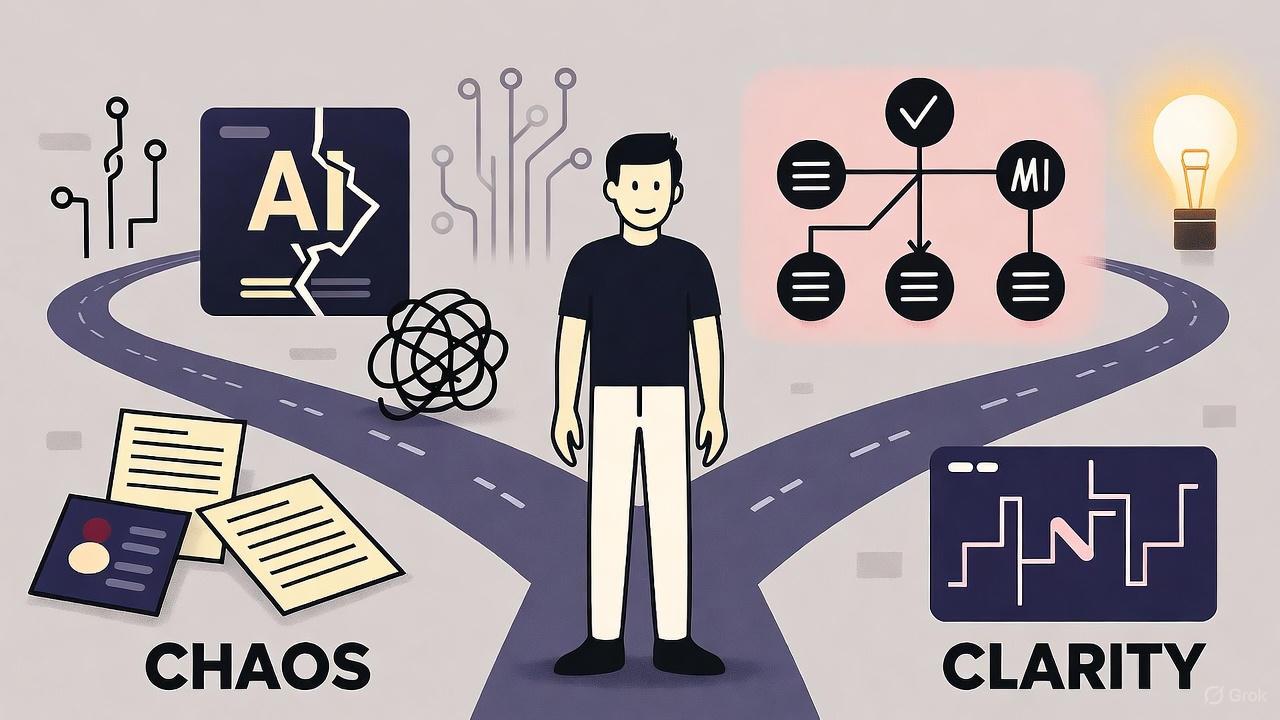90% of Startups Die Because the Customer Doesn’t Feel Pain
90% of startups fail because customers don’t feel real pain. Learn how to validate ideas, avoid AI chaos, and turn vision into a working product.
Every month, thousands of new ideas emerge around the world. People quit their jobs, find partners, hunt for investments, open Figma and Notion, order logos and domains.
But nine out of ten startups never even get to an MVP. They burn out, collapse, or quietly vanish like a sandcastle after the tide.
Why Does This Happen?
The answer is painfully simple — founders fall in love with their idea.
This infatuation blinds them. It gives an illusion of clarity and meaning:
“I definitely know what the market is missing.”
“This feature will revolutionize the industry.”
“We’ll just build it and show it.”
And instead of cold analysis — warm enthusiasm.
Instead of research interviews — a quick prototype.
Instead of hypothesis testing — the phrase: “Well, I’d use it myself!”
Three months, $50,000 and 200 sleepless hours pass — and suddenly it turns out that the market is saturated, the audience doesn’t feel pain, and even its own team doesn’t understand the product.
Thus the “dream” becomes an expensive hobby, and the “startup” becomes a case study on what not to do.
The AI Trap
Even those who say “we’ll do it smartly” stumble into another trap — chaos when working with AI.
Today, ChatGPT and dozens of other tools allow a founder to literally “assemble” a product out of thin air:
an idea, JTBD (Jobs To Be Done), metrics, landing page, pitch deck — all in one day.
It sounds beautiful.
In practice, however — the neural network loses context, every prompt lives separately, structure collapses, and in the end the founder sits before a pile of documents: strategy, features, competitors, brand… and nothing fits into a system.
It becomes an informational kaleidoscope instead of a product.
Many pieces, but no whole.
The reason is the absence of process.
AI is a powerful tool, but without structure it turns into noise.
The Solution — a Systematic Validation Framework
The solution is a structured framework of idea validation that helps you go from intuition to a conscious concept.
Example Logic
Context — articulate what the idea is, what pain it addresses, why now.
Not just a description — an honest attempt to answer: who has pain and why it matters to me.Research — gather reality. Market, trends, competitors, analogous solutions, reviews.
Not to seek confirmation, but to look for refutation.Elaboration — structure insights. Define key scenarios, features, metrics, JTBD.
Turn “chaos” into a system.Assembly — bring everything together into a coherent story:
who the user is, what they do, why it matters, how we measure it.
At this stage, the idea first looks like a product.Tuning — check for integrity:
do hypotheses contradict each other, is the value clear, is the MVP ready?
Each stage uses artifacts from the previous one.
It’s like a constructor — if you pull out one part, everything collapses.
Not perfect, but better than nothing.
Because this approach gives you not just a plan, but an architecture of thought, where AI helps you think, rather than replacing thinking.
Benefits of This Approach
- You don’t lose months on guesses
- You minimize the risk of “falling in love” with an invalid idea
- You save money, resources, and belief in yourself
- You get a system where every artifact is logically linked to the previous one
- You turn AI from an idea generator into a strategic cofounder
From Chaos to Clarity
As a result — not an abstract “I have an idea,” but a concrete
“I have a validated product concept”
that you can show to investors, designers, and developers.
You see weak spots before the market does.
You validate hypotheses before writing code.
You arrive at an MVP not by intuition, but by logic.
The main benefit: the journey from a raw idea to a validated concept takes days, not months.
And this is not about speed for speed’s sake — it’s about clarity, confidence, and focus.
While others burn through budgets trying to “refactor architecture,”
you are already testing the product with the first users.
That’s the difference between chaos and system.
Between an idea and a product.
Between “we tried” and “we did it.”

Comments powered by Disqus.